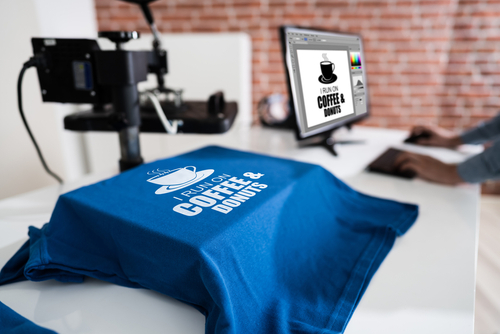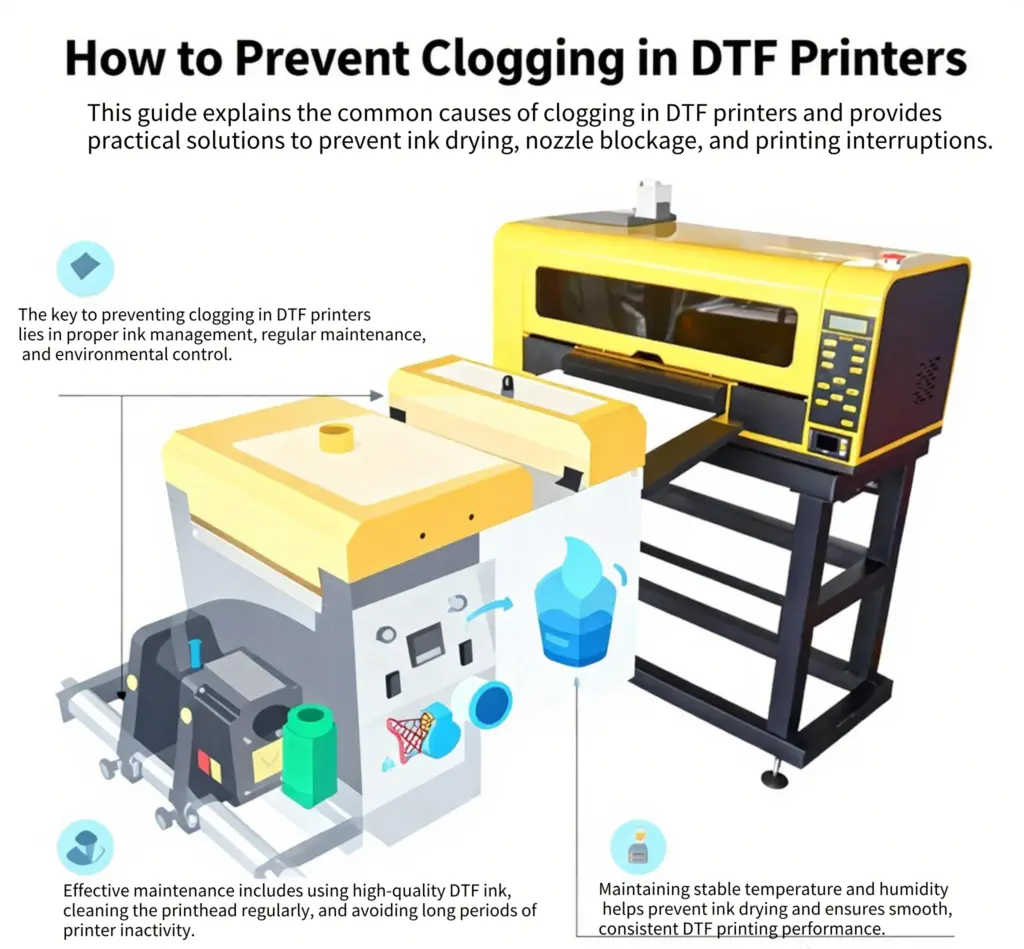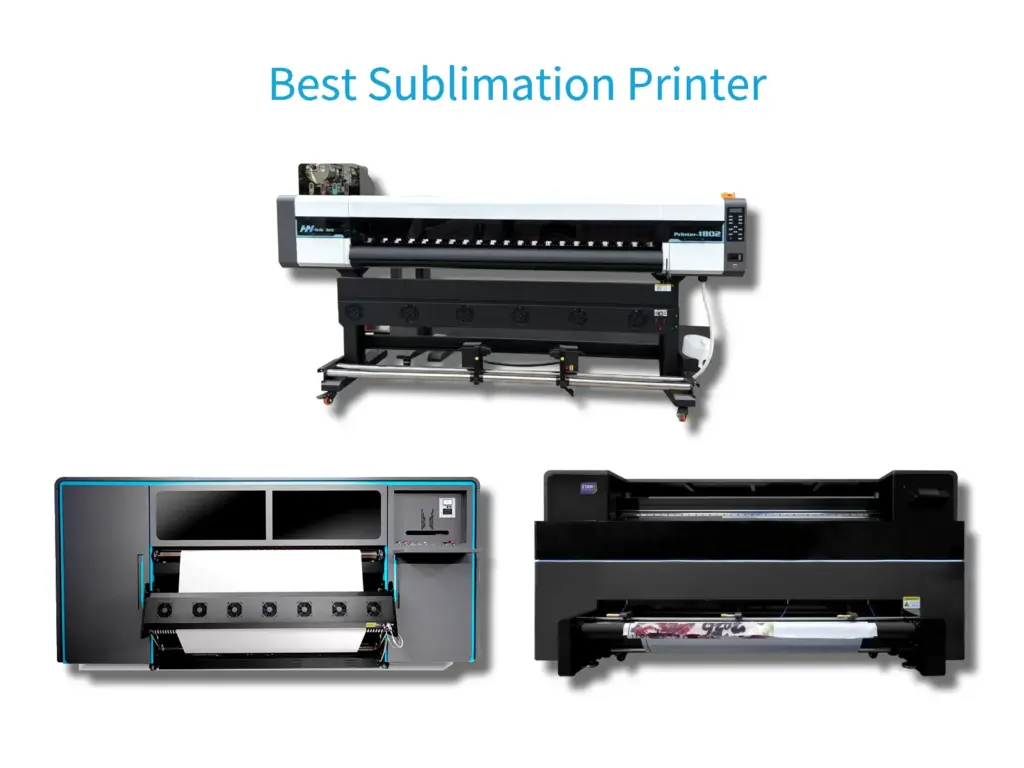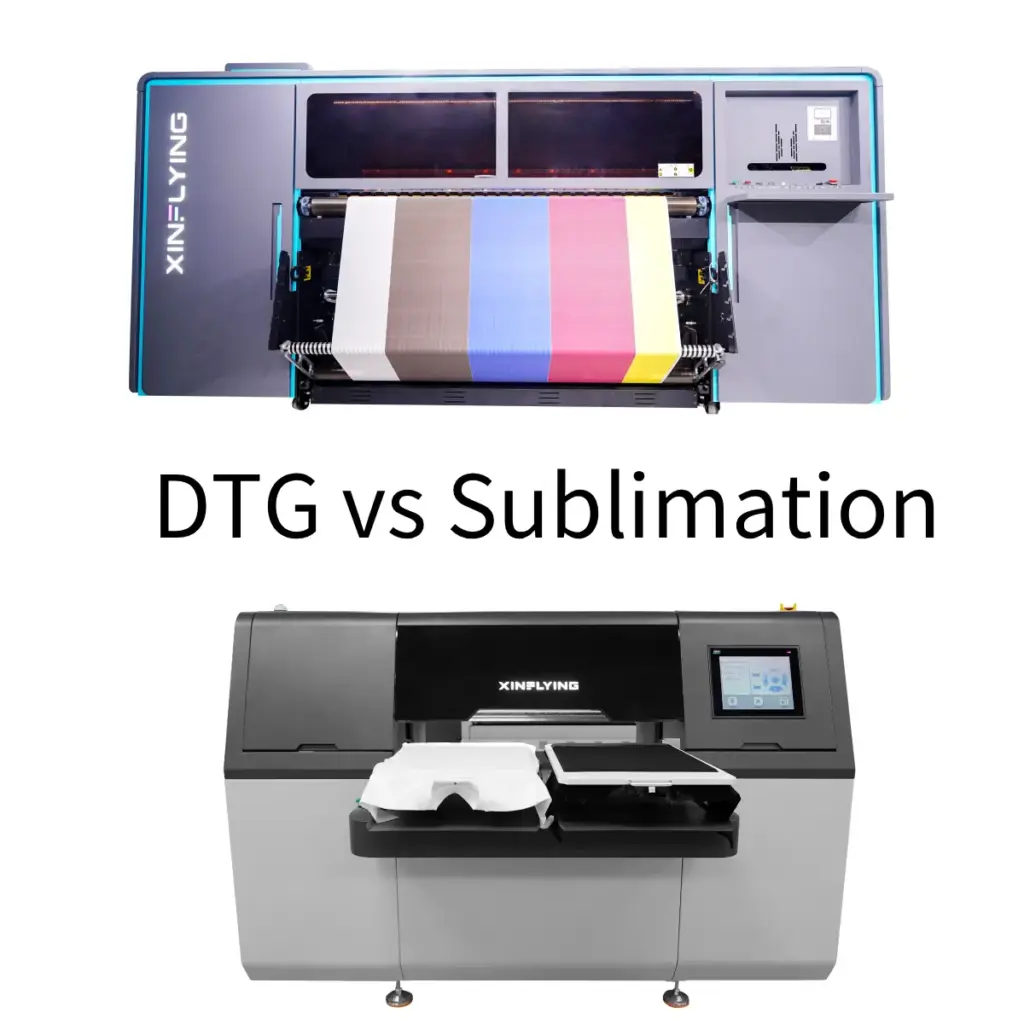In vải là một nghệ thuật đã phát triển đáng kể trong những năm qua, Cung cấp một loạt các kỹ thuật để đưa thiết kế vào cuộc sống. Liệu bạn có chế tạo áo phông tùy chỉnh, Thiết kế vải cho thời trang, hoặc sản xuất các mặt hàng quảng cáo, Các kỹ thuật in dệt mà bạn chọn có thể tạo ra sự khác biệt đáng kể trong sản phẩm cuối cùng. Hướng dẫn này sẽ đi sâu vào 6 Các loại kỹ thuật in vải, Khám phá các quá trình của họ, ứng dụng, Ưu điểm, và khuyết điểm để giúp bạn chọn phương pháp tốt nhất cho nhu cầu của bạn.
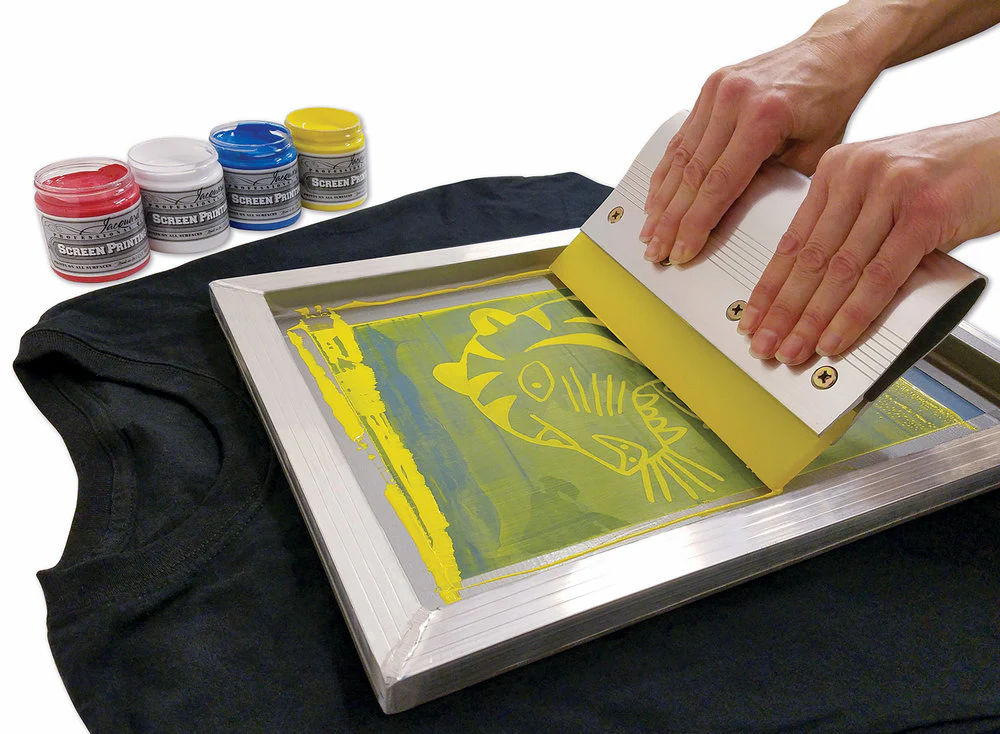
In lụa
In lụa là một trong những kỹ thuật in vải lâu đời nhất và được sử dụng rộng rãi nhất. Nó liên quan đến việc tạo ra một stprint (hoặc màn hình) và sử dụng nó để áp dụng các lớp mực trên bề mặt in.
Quá trình
Quá trình bắt đầu bằng việc tạo một stprint trên màn hình lưới tốt. Mực sau đó được đẩy qua lưới lên vải bằng cách sử dụng một vắt. Mỗi màu trong thiết kế đòi hỏi một màn hình và lớp mực riêng biệt, Làm cho nó phù hợp cho đơn giản, thiết kế táo bạo.
Các ứng dụng
In màn hình là lý tưởng cho các đơn đặt hàng khối lượng lớn và thường được sử dụng cho áo phông, túi tote, và áp phích. Nó đặc biệt phổ biến trong các ngành công nghiệp thời trang và quảng cáo.
Ưu điểm
- Độ bền: Sản xuất các bản in lâu dài có thể chịu được các lần rửa lặp đi lặp lại.
- Màu sắc rực rỡ: Cung cấp phong phú, màu sắc rực rỡ pop.
- Hiệu quả chi phí: Kinh tế cho các lô lớn.
Nhược điểm
- Thời gian thiết lập: Yêu cầu thời gian thiết lập đáng kể, làm cho nó kém hiệu quả hơn cho các đơn đặt hàng nhỏ.
- Chi tiết hạn chế: Không lý tưởng cho các thiết kế với các chi tiết phức tạp hoặc nhiều màu sắc.

Trực tiếp đến may mặc (DTG) In ấn
in DTG Sử dụng công nghệ in phun để in thiết kế trực tiếp lên vải. Hãy nghĩ về nó như một máy in phun khổng lồ cho quần áo.
Quá trình
Vải được tải vào máy in DTG, nơi mực được áp dụng trực tiếp lên bề mặt. Mực ngâm vào các sợi, Tạo một bản in mềm và bền. Phương pháp này là tuyệt vời cho các thiết kế chi tiết và nhiều màu.
Các ứng dụng
Hoàn hảo cho các đơn đặt hàng nhỏ đến trung bình, In DTG được sử dụng rộng rãi cho áo phông tùy chỉnh, đặc biệt là những người có thiết kế phức tạp và đầy màu sắc.
Ưu điểm
- Chi tiết và màu sắc: Có khả năng in hình ảnh độ phân giải cao với phổ màu rộng.
- Không có chi phí thiết lập: Lý tưởng cho các lô nhỏ và đơn đặt hàng tùy chỉnh.
- Kết thúc mềm: Sản xuất các bản in mềm khi chạm vào.
Nhược điểm
- Trị giá: Chi phí cao hơn trên mỗi đơn vị cho các đơn đặt hàng lớn hơn.
- Tốc độ chậm hơn: Thời gian sản xuất chậm hơn so với in màn hình.

Trực tiếp tới phim (DTF) In ấn
Trong số các loại kỹ thuật in vải khác nhau, in DTF nổi bật do tính linh hoạt của nó. In DTF liên quan đến việc in một thiết kế lên một bộ phim đặc biệt, sau đó được chuyển sang vải bằng cách sử dụng nhiệt và bột dính.
Quá trình
Thiết kế được in trên phim thú cưng bằng máy in DTF đặc biệt. Phim in được phủ bột dính, tan chảy, và sau đó được chuyển sang vải bằng cách sử dụng máy ép nhiệt.
Các ứng dụng
In DTF là linh hoạt, Thích hợp cho các loại vải khác nhau, bao gồm bông, polyester, và pha trộn. Nó thường được sử dụng cho các mặt hàng quảng cáo và may mặc tùy chỉnh.
Ưu điểm
- Tính linh hoạt: Có thể in trên một loạt các tài liệu.
- Chi tiết: Xử lý các thiết kế chi tiết và nhiều màu tốt.
- Độ bền: Tạo ra các bản in bền chống lại vết nứt và phai màu.
Nhược điểm
- Độ phức tạp: Yêu cầu nhiều bước và kiểm soát chính xác.
- Trị giá: Thiết lập ban đầu và vật liệu có thể tốn kém.
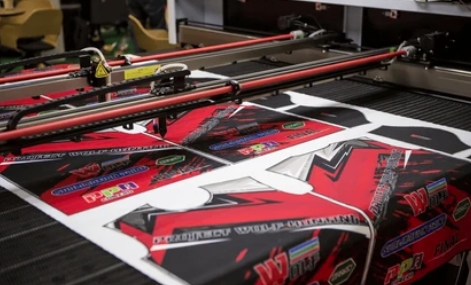
In thăng hoa
In thăng hoa Sử dụng nhiệt để truyền thuốc nhuộm lên vải, dẫn đến thiết kế sôi động và vĩnh viễn.
Quá trình
Thiết kế được in trên giấy thăng hoa đặc biệt bằng cách sử dụng mực thăng hoa. Nhiệt và áp suất được áp dụng để chuyển thuốc nhuộm từ giấy sang vải, nơi nó liên kết ở cấp độ phân tử.
Các ứng dụng
Phù hợp nhất cho các loại vải được phủ polyester và polymer, In thăng hoa thường được sử dụng cho đồ thể thao, cờ, và các mặt hàng quảng cáo tùy chỉnh.
Ưu điểm
- Màu sắc rực rỡ: Sản xuất sáng, sôi động, và màu sắc vĩnh viễn.
- In toàn bộ: Lý tưởng cho các bản in toàn diện.
- Độ bền: Thiết kế rất bền và won crack, bóc, hoặc mờ dần.
Nhược điểm
- Giới hạn vải: Giới hạn ở các bề mặt phủ polyester hoặc polymer.
- Trị giá: Có thể tốn kém do các vật liệu chuyên dụng.
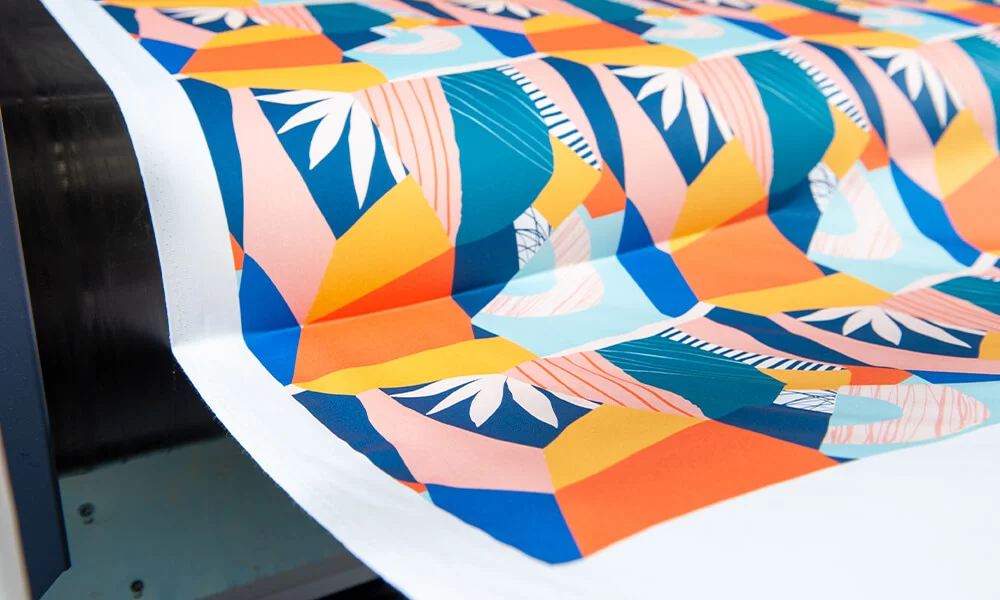
In sắc tố
In sắc tố sử dụng các loại mực có vị trí trên các sợi vải, thay vì ngâm trong.
Quá trình
Thiết kế được in trực tiếp trên vải bằng máy in được trang bị mực sắc tố. Sau khi in, Vải thường được đặt nhiệt để sửa chữa sắc tố.
Các ứng dụng
Lý tưởng cho cả vải tự nhiên và tổng hợp, in sắc tố được sử dụng trong thời trang, sản phẩm dệt dân dụng, và trang phục tùy chỉnh.
Ưu điểm
- Tính linh hoạt: Thích hợp cho một loạt các loại vải.
- Độ bền màu: Cung cấp độ bền màu tốt và độ bền rửa sạch.
- Chi tiết: Có khả năng in các chi tiết tốt và màu sắc rực rỡ.
Nhược điểm
- Kết cấu: Bản in có thể cảm thấy cứng trên bề mặt vải.
- Mờ dần: Màu sắc có thể mờ nhanh hơn các phương pháp khác nếu không được sửa đúng.

Vinyl truyền nhiệt (HTV) In ấn
In HTV liên quan đến việc cắt thiết kế từ các tấm nhựa vinyl và ép nhiệt chúng lên vải.
Quá trình
Thiết kế được cắt từ các tấm nhựa vinyl bằng máy vẽ hoặc máy cắt. Sau đó, vinyl cắt được làm cỏ để loại bỏ vật liệu dư thừa và ép nhiệt lên vải.
Các ứng dụng
Thường được sử dụng cho đồ thể thao, Áo phông tùy chỉnh, và các mặt hàng quảng cáo, In htv rất linh hoạt và phổ biến cho các thiết kế một lần và các hoạt động ngắn.
Ưu điểm
- Độ bền: Sản xuất các bản in bền và có thể giặt được.
- Tính linh hoạt: Có sẵn trong nhiều màu sắc và kết thúc, bao gồm cả kim loại và long lanh.
- Dễ sử dụng: Quy trình đơn giản mà không yêu cầu thiết lập rộng rãi.
Nhược điểm
- Kết cấu: Bản in vinyl có thể cảm thấy nặng và cứng.
- Chi tiết hạn chế: Không lý tưởng cho các thiết kế rất chi tiết hoặc nhiều màu.
Bạn nên chọn phương pháp in nào?
Chọn phương pháp in vải phù hợp phụ thuộc vào nhu cầu cụ thể của bạn. Xem xét loại vải, độ phức tạp của thiết kế, kích thước đặt hàng, và ngân sách.
In lụa là tuyệt vời cho các lô lớn với các thiết kế đơn giản, trong khi DTG là hoàn hảo cho các bản in tùy chỉnh chi tiết và đầy màu sắc. DTF Cung cấp tính linh hoạt trên các loại vải, Sự thăng hoa cung cấp màu sắc rực rỡ cho polyester, in sắc tố Hoạt động tốt cho nhiều loại vật liệu, Và HTV là tuyệt vời cho bền, Bản in tùy chỉnh.
Phần kết luận
Điều hướng thế giới in vải có thể quá sức, Nhưng hiểu những ưu và nhược điểm của các phương pháp in khác nhau trên vải có thể hướng dẫn bạn lựa chọn tốt nhất cho dự án của mình. Liệu bạn có đang tìm kiếm sự sống động, Các bản in bền hoặc giải pháp hiệu quả chi phí cho các đơn đặt hàng lớn, Có một kỹ thuật in phù hợp với nhu cầu của bạn. Xem xét loại vải của bạn, Chi tiết thiết kế, và khối lượng sản xuất để đưa ra quyết định sáng suốt sẽ đưa tầm nhìn sáng tạo của bạn vào cuộc sống.
Câu hỏi thường gặp
1. Phương pháp in vải bền nhất là gì?
In màn hình và in thăng hoa được biết đến với độ bền của chúng, chịu được nhiều lần rửa mà không bị phai hoặc nứt đáng kể.
2. Tôi có thể sử dụng DTF in trên bất kỳ loại vải nào không?
In DTF rất linh hoạt và có thể được sử dụng trên nhiều loại vải, bao gồm bông, polyester, và pha trộn.
3. Phương pháp in tốt nhất cho phức tạp là gì, Thiết kế nhiều màu?
In DTG là lý tưởng cho các thiết kế chi tiết và nhiều màu, Cung cấp độ phân giải cao và màu sắc rực rỡ.
4. In thăng hoa giới hạn ở một số loại vải nhất định?
Đúng, In thăng hoa hoạt động tốt nhất trên các loại vải được phủ polyester và polymer do quá trình liên kết cần thiết để thuốc nhuộm truyền vào vật liệu.
5. Làm thế nào tôi có thể giảm thời gian thiết lập để in vải?
Các phương pháp như in DTG và HTV có thời gian thiết lập tối thiểu so với in màn hình, Làm cho chúng hiệu quả hơn cho các đơn đặt hàng nhỏ và quay vòng nhanh.

